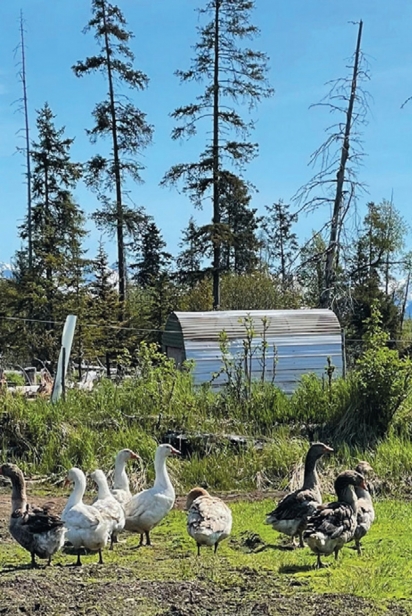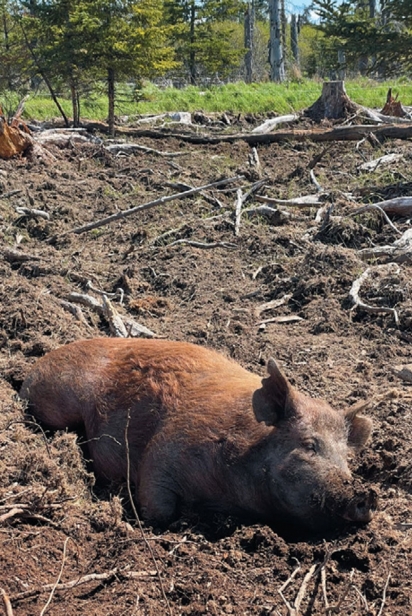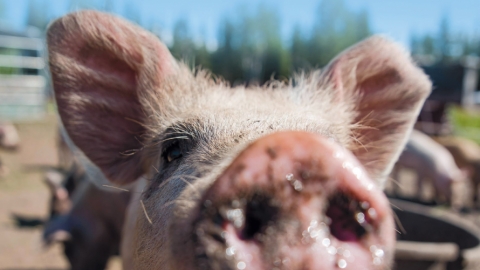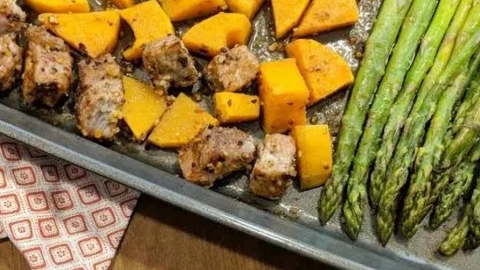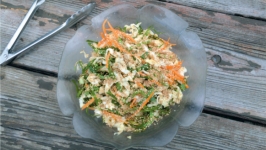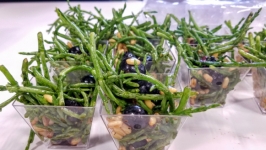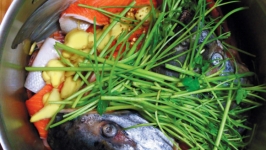Feed the Soil, Feed the Community
“Early on, we focused on livestock... We had a lot of land to clear, and we knew we wanted to use animals to do it,” says Aryn Young, co-owner of Blood Sweat & Food Farms, a regenerative farm in Homer.
Since 2017, Blood Sweat & Food has grown from five acres to 20. The owners complement their farm business with a general excavation firm and a bookkeeping company. You might say their business model is “regenerative” as well, since they have taken equipment and services they need to run their business and turned them into sources of revenue.
In order to get their land (filled with spruce trees, roots, and stumps) ready to become pasture, they implemented step one of their animal agriculture plan, their team of Tamworth hogs. “They eat all the understory, adding value to the land,” says Young. “We knew we wanted to farm in a way that was good for the property. The animals add a lot of nutrients.”
The rest of the farm animals help with the pasture and soil building project, too. The chickens, geese, ducks, and turkeys forage for slugs, bugs, and small weeds. Once a pasture has been seeded and grass is growing, the sheep keep the grass the perfect length. The horses, who have been selected specifically to thrive in Homer’s climate, move equipment, water, and feed. Ren, the sheep dog, oversees everyone.
Young says the business has grown year over year. “We’re essentially grass farmers.” They focus both on the quality of the pasture and the diversity of the pasture which in turn provides food for their animals. The animals maintain and fertilize the pasture through intentional rotation. What would be considered “waste” in an industrialized farm becomes nutrients for the soil. “We’re taking one type of ecosystem and we’re making it into something that’s even more productive while still utilizing the resources [that are] here.”
One of the innovative tools that Blood Sweat & Food Farms uses is biochar—specially made charcoal with specific agricultural uses (read more about biochar in Lisa Held’s story in this issue). Biochar is often used to hold water in dry soil. Since Alaska isn’t dealing with drought, their biochar—created with a special “retort” burner—is “charged” or filled with compost and used to add nutrients to the soil.
Amid all the “grass farming” work, Blood Sweat & Food has created a new source of food to feed the community of Homer and beyond. Eggs, chicken, turkey, goose, pork, and lamb are available for pickup, delivery, and even air freight to farther flung parts of the state.
Young says, “The key component to what we do in terms of regenerative agriculture… is about leaving the land better than when the animals showed up… A lot of what we do is designed to increase the species on our farm… Once we opened edge habitat, the number of species on our farm—birds especially—quadrupled. We started seeing swallows, bats, and other types of animals. Ermine moved in because the voles are eating the grain that we had… So, we’ve created a kind of an ecosystem that just gets better and better and better over time. And the way that you do that is by using each animal for its purpose, and then following that with another animal that’s going to add even more value.”
At Blood Sweat & Food Farms, the love and care for the animals matches the care for the land. The humans encourage balance among the more than human members of this ecosystem. In turn, communities in Homer and beyond have access to sustainable, local, nutrient-dense, delicious, food.




